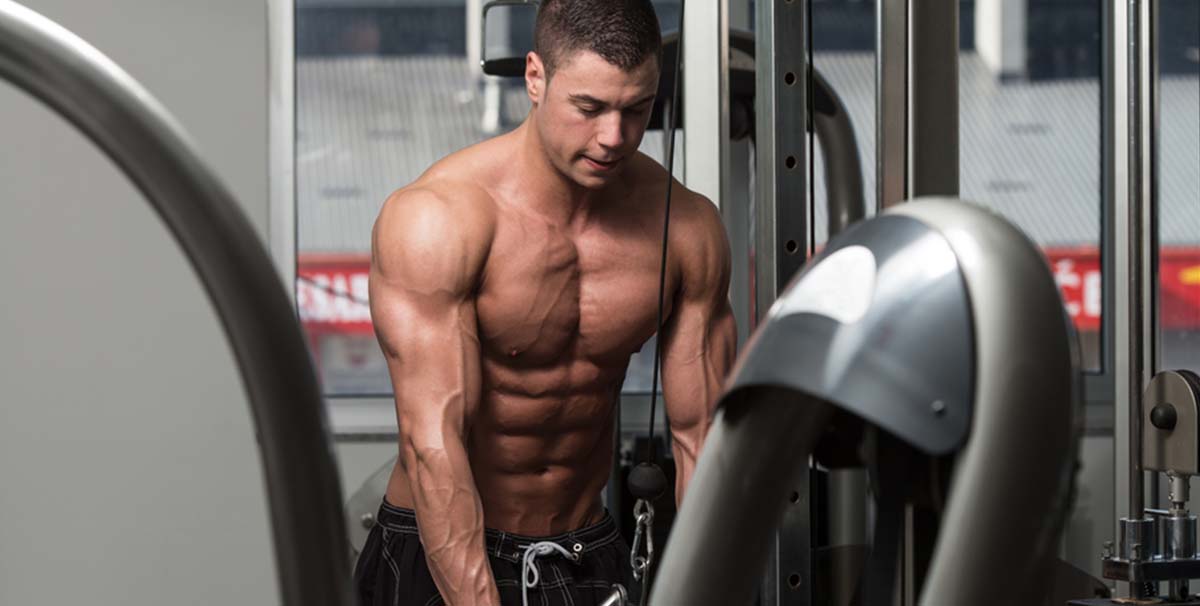Transforming a 4-pack into a 6-pack requires attention to both nutrition and physical activity. By lowering your body fat percentage with a nutritious diet and engaging in specific abdominal workouts, you’ll be well on your way to your desired results. Remember, consistency is crucial.
In this article, I’ll talk about how to go from a 4-pack to a 6-pack ab, with easy tips on food, exercise, and changes in your daily life. These will help you get the great-looking abs you want.
P
Turning a 4-Pack Into a 6-Pack
Here are a few tips to help you turn a 4-pack into a 6-pack:
Do High-Intensity Exercises
High-intensity exercises can help turn a 4-pack into a 6-pack by targeting and strengthening the underlying abdominal muscles.
These exercises, such as planks, mountain climbers, and burpees, engage the entire core and activate the deeper muscle fibers that may not be targeted with traditional crunches or sit-ups.
Increasing the workout’s intensity can increase muscle activation and promote muscle hypertrophy, resulting in a more defined and sculpted six-pack.
In addition to building muscle, high-intensity exercises can help reduce body fat, which is crucial for revealing a six-pack. These exercises increase your heart and metabolic rates, leading to a greater calorie burn during and after the workout.
Combining high-intensity exercise with a healthy diet and consistent exercise routine will help you achieve a leaner, more defined core and turn your four-pack into a six-pack.
Proper Form and Intensity
Proper form and intensity are essential for turning a 4-pack into a 6-pack.
Doing abdominal exercises with proper form ensures that you are targeting the muscles you intend to work on and reduces the risk of injury.
Planks, crunches, and leg raises are excellent low-intensity workouts to start with, and as your ab muscles get stronger, you may increase the effort and intensity.
Maintaining proper form throughout the workout is also critical. It is better to do fewer reps with correct form than more reps with poor form, which can lead to injury and ineffective workouts.
Lower Abs Workout for 6-Pack Abs
Some of the Lower Abs workouts include:
Leg Raises
Leg raises are an effective exercise for targeting the lower abs. Straight leg kicks, straight leg lifts, seated straight leg high kicks, and hanging leg raises are some exercises that can help build lower abs strength.
These exercises help increase tension within the rectus abdominis muscles, which play a vital role in defining the lower abs.
By incorporating these exercises into a workout routine, individuals can turn their 4-pack into a 6-pack and achieve the desired chiseled abs.
Crunch With Weights
Doing weighted crunches is a great technique to strengthen your core and build up your rectus abdominis.
For optimal results, execute 2-3 sets of 12-15 reps using a weight that is heavy enough to be difficult but light enough to ensure good form and technique.
If you’re new to weight training, it’s important to start with lesser weights and work your way up to heavier ones as your strength and stamina improve.
It’s also crucial to avoid utilizing momentum to help you lift the weight and stick to the appropriate form to avoid injury.
Decline Crunch with Weights
Decline crunches with weights can be an effective exercise to help turn a 4-pack into a 6-pack.
With added resistance, this exercise targets the lower abs and improves muscle activation.
Aim for 3-4 sets of 12-15 reps to see results, gradually increasing weight and intensity over time.
However, it’s also crucial to note that visible abs largely depend on low body fat levels. Therefore, a healthy diet and regular cardio exercise is crucial for achieving a defined abdomen.
Bicycles With Weights
Bicycles with weights can help turn a 4-pack into a 6-pack by adding resistance to the abdominal muscles.
This will increase the intensity of the exercise and force the muscles to work harder, leading to greater muscle definition and strength.
Aim for 3 sets of 15-20 reps with a moderate weight to see results.
Heavy Rope Crunches
Rope crunches are an effective way to work the rectus abdominis, obliques, and transverse abdominis muscles, which can help you get a six-pack.
For this exercise, you’ll sit on the floor with your hands on a thick rope behind your head. From there, you’ll bend forward while keeping your arms straight.
With the rope’s added resistance, the workout becomes more taxing and activates more muscle fibers than without it.
Results can be seen after performing 3–4 sets of 12–15 reps with good technique and correct form.
Swiss Ball Knee Tuck
Swiss Ball Knee Tucks are an effective core exercise that targets the rectus abdominis, which is the muscle responsible for creating the appearance of a six-pack.
By performing this exercise, you engage your core muscles, forcing them to contract and work together to stabilize your body.
Aim for 3 sets of 12-15 reps with proper form to see results.
Dragon Flag
The Dragon flag is an advanced bodyweight exercise that can help turn a 4-pack into a 6-pack by targeting the rectus abdominis, obliques, and hip flexors.
By performing multiple sets of 5-10 reps of Dragon flags, you can effectively build strength and definition in your abs, ultimately leading to a more defined six-pack.
Consistency and Dedication
If you want to go from having a 4-pack to a 6-pack, consistency and commitment are essential.
You can only expect to get a six-pack with regular exercise, a healthy diet, plenty of motivation, reasonable goals, and close attention to your results.
Try to work out at least three to four times a week, gradually increasing the time spent exercising and the difficulty of your routine.
Pay special attention to high-intensity exercises for the core and lower abs, and supplement them with cardiovascular activities to burn even more fat and calories.
Equally important is eating a diet rich in fruits, vegetables, complex carbohydrates, and lean proteins while limiting sugary and fatty foods.
This dedication provides energy for training and helps you see your abs.
Nutrition – Eating Healthy

The key to achieving a six-pack is keeping a calorie deficit while putting quality food first. Instead of reaching for junk food, reach for lean protein, healthy fats, and complex carbohydrates like those found in whole grains and veggies.
These nutrients help build muscle, heal damaged muscle, and power your workouts. Vitamins and minerals can only be obtained from food, and a diet high in vegetables and fruits is optimal.
A six-pack is visible to the naked eye at a body fat percentage of 10-14% for most males but 14-24% for certain women.
Remember that your body fat percentage and the degree to which your ab muscles are visible can be affected by genetics, age, and body type.
Does Genetics Play a Role in Turning a 4-Pack Into a 6-Pack?
Genetics indeed plays a role in turning a 4-pack into a 6-pack. Your genetics determine factors such as muscle distribution, muscle shape, and body fat distribution, which can influence the visibility and overall appearance of your abdominal muscles.
Some people naturally have a more defined or pronounced 6-pack due to their genetic predisposition, while others may struggle to achieve the same look.
However, it is essential to remember that genetics is not the sole determinant of your abdominal muscles’ appearance.
A combination of consistent exercise, proper nutrition, and a healthy lifestyle can help you improve muscle definition and work towards a 6-pack, even if your genetics are not naturally predisposed to it.
Does Adding Heavy Weights to All Your Ab Routines Help Turn A 4-Pack into A 6-Pack?
Adding heavy weights to your ab routines can certainly help you build stronger and more defined abdominal muscles.
Still, it’s important to understand that the number of visible abdominals you have is largely determined by genetics and your body fat percentage.
While heavy ab workouts can help increase muscle size and definition, they won’t necessarily result in more visible packs.
Is there a difference between men’s and women’s abs?

Each sex has the same set of abdominal muscles; therefore, the difference between a man’s and a woman’s six-pack is minimal.
Abs are more apparent on males than women because of hormonal and genetic factors that cause them to have a lower body fat percentage.
As a general rule, women have wider hips than males, which might soften the appearance of their abdominal muscles.
In addition, the intensity and regularity of abdominal exercises needed to acquire a six-pack differ. Women may need more time and effort than males to develop and define their abdominal muscles because women typically have less muscle mass.
Women and men are equally capable of developing a toned and defined abdominal region via regular exercise and devotion.
Are 10 pack abs possible?
Yes, having a 10-pack of abs is possible, but it is rare.
The number of visible abs a person can have is largely determined by genetics, and the number of tendinous intersections in the rectus abdominis muscle plays a key role.
According to research, a 10-pack is found in approximately 1% of instances, although there is a lack of definitive research on this subject.
Bottom line
Good nutrition and regular exercise are the keys to achieving six pack abs. To get lean, it’s best to combine high-intensity ab-focused workouts with consistent cardio.
Maintain as much as possible a diet high in complex carbs, lean protein, and healthy fats.
Don’t focus solely on your abs; your entire body is important.
Abs can be developed by everyone, regardless of gender, via consistent exercise.

